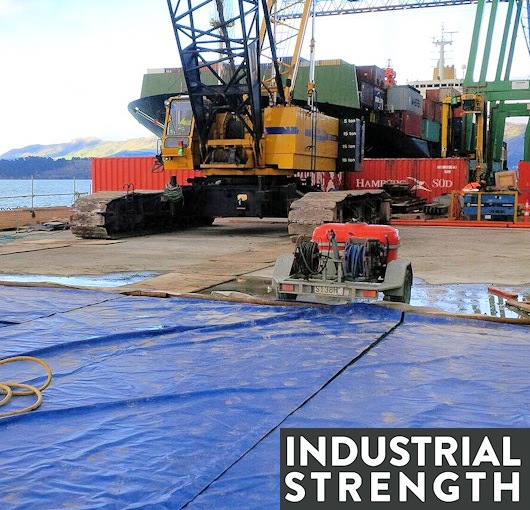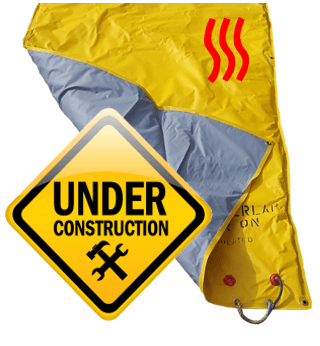
What is the Temperature for Concrete Curing?
The standard temperature to achieve full strength in concrete curing is 55°F. this is regardless the weather condition.
Dam Curing
The Hoover dam as you know was the largest dam worldwide at its completion. June 6, 1933, was a remarkable day for engineers on the site as they began the first pour. The dam was built as a series of individual columns, rather than single block concrete. Its Trapezoidal column shape stands five-foot lifts. The idea behind this is to allow heat produced by the curing to be able to dispel. If they had built the dam in a single block, the concrete would take over 100 years to cool to ambient temperature due to the heat produced. It wouldn’t have been a successful job if it was built in a single continuous pour, the stress would definitely cause a crack in the dam and it will surely crumble.
Another challenge the team was faced with was the heat and dryness of Nevada. When the concrete was poured, river water was used to circulate through cooling coils of 1″ thin-walled steel pipes. After the cooling with river water, cold water from a refrigeration plant on the lower cofferdam was poured to circulate the concrete through the coil to finish the cooling. Needless to say, if the hoover dam had access to ALCO Concrete Curing Blankets, the project timeline could have been greatly reduced.

The Art
Everyone wants to get to their destination faster or finish a job in no time that is the world we live in, however, concrete that cures too quickly or under hot curing temperature will at the end result to a weak concrete. Therefore it is standard for concrete to be cured at a moderate temperature of 32°-50°F with moisture, the strength of the concrete will be slow but it will eventually reach its full strength. The concrete temperature should not exceed 90°F or dry out during the curing process, this may result in flaking.
Temperature Best For Concrete Curing
The following shows which temperature is best for concrete curing: Two concrete curing process 120°F and 55°F
Day 1 - 120°F cured concrete is strong. (High temperature)
55°F cured concrete is weak. (Low temperature)
Day 7 - 120°F cured concrete has no more strength
55°F cured concrete still has the strength
Day 28 - 120°F cured concrete becomes weaker
55°F cured concrete gets stronger
28 to 365 days - 55°F concrete is considered stronger than 120°F concrete
In Conclusion
This suggests that, as long as curing is continuous, concrete cured at 55°F from day 1 to day 28 ultimately reaches full concrete strength.
Concrete Temperature Limit In Hot Weather
Hot weather doesn’t necessarily involve temperature alone. Temperature, Wind, Relative humidity all have a role to play in hot weather. During hot weather conditions, the main curing challenge is having the top of the slap dry faster than the bottom. Concrete dries from the top and it shrinks when it does, this means the top shrinks leaving the bottom and this creates internal problems with the concrete which results in damage slab. For a successful curing, both top and bottom of the slab need to cure at the same rate.
Features
- Use ALCO's heat-spreading technology in reverse.
- The robust system used in
- Powerblanket heating products is similar to blanket cover and insulation.
- Portable.
- Controls the curing speed even in hot conditions.
- Cures approximately 3 times faster than conventional or insulated blankets.
- Produce concreting strength of about 3,925 psi within 72 hours in cold weather.
- Maintain moisture throughout hydrating process.
- Installed and removed easily.
- Prevent a freeze cycle.
- Melt ground and frost from the previous job prior to pour.
- Increase profitability.
- Maintain ACI compliance for cold weather concreting.
Solution To Concrete Curing Temperature
Is The Temperature Too Hot?
ALCO Electric Curing Blanket is a portable cooling equipment that keeps poured concrete safe from the heat. ALCO Electric Curing Blanket regulates the temperature of concrete under regular or hot conditions. It is portable, insulated and efficient. The power blanket can be installed and removed easily. The ALCO Electric Curing Blanket is combined with either a cooler or chiller to attain optimum results. The circulation blanket, found inside the ALCO Electric Curing Blanket, draws heat to the blanket to cool the concrete.
Is The Temperature Too Cold?
No need to worry during winter. ALCO's concrete curing blanket offers a way to cure concrete confidently and effectively in cold weather condition. The use of ALCO concrete curing blanket increases production through consistent curing.
